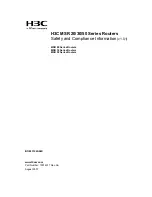
Chapter 9
Digital Routing and Clock Generation
©
National Instruments Corporation
9-7
The following is an example of low to high transitions of the input signal.
High to low transitions work similarly.
Assume that an input terminal has been low for a long time. The input
terminal then changes from low to high, but glitches several times. When
the filter clock has sampled the signal high on N consecutive edges, the low
to high transition is propagated to the rest of the circuit. The value of N
depends on the filter setting; refer to Table 9-2.
The filter setting for each input can be configured independently. On power
up, the filters are disabled. Figure 9-3 shows an example of a low to high
transition on an input that has its filter set to 125 ns (N = 5).
Figure 9-3.
Filter Example
Enabling filters introduces jitter on the input signal. For the 125 ns and
6.425
μ
s filter settings, the jitter is up to 25 ns. On the 2.56 ms setting,
the jitter is up to 10.025
μ
s.
When a PFI input is routed directly to RTSI, or a RTSI input is routed
directly to PFI, the S Series device does not use the filtered version of
the input signal.
Table 9-2.
Filters
Filter Setting
N (Filter Clocks
Needed to
Pass Signal)
Pulse Width
Guaranteed to
Pass Filter
Pulse Width
Guaranteed to
Not Pass Filter
125 ns
5
125 ns
100 ns
6.425
μ
s
257
6.425
μ
s
6.400
μ
s
2.56 ms
~101,800
2.56 ms
2.54 ms
Disabled
—
—
—
1 2
3
1 4
1
2
3
4 5
RT
S
I, PFI, or
PXI_
S
TAR Termin
a
l
Filter Clock
(40 MHz)
Filtered Inp
u
t
Filtered inp
u
t goe
s
high when termin
a
l
i
s
sa
mpled high on
five con
s
ec
u
tive filter
clock
s
.
















































